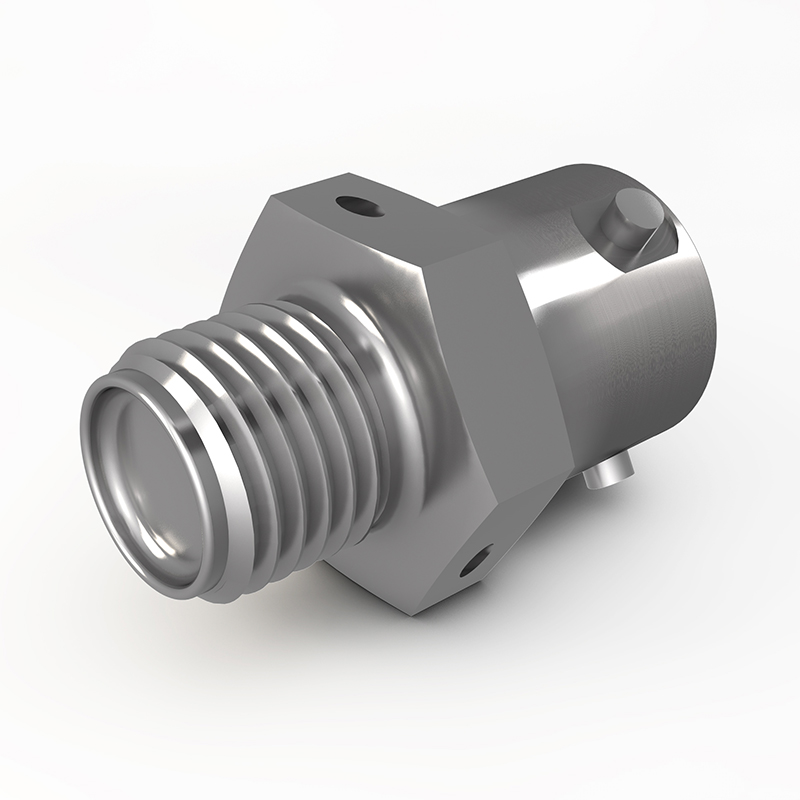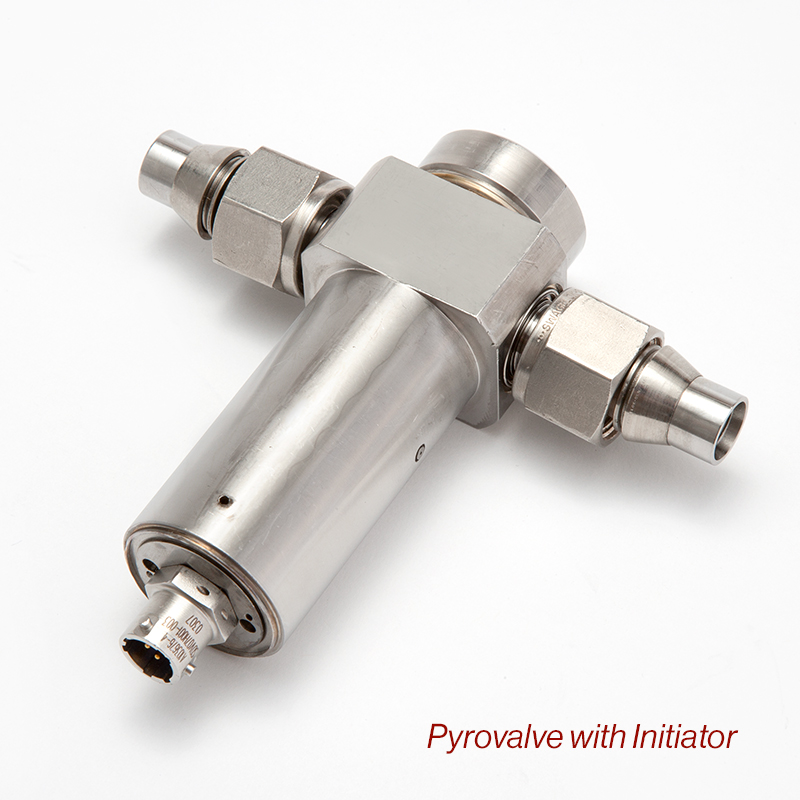



Electric Initiators are commonly used on missiles, launch vehicles, spacecraft, and other aerospace and defense platforms for the initiation of solid rocket motors and other propulsive elements, and actuation of mechanisms such as separation devices, cutters, pin pullers, or isolation valves. The Initiator takes an electrical input and provides work in the form of a pyrotechnic output.
Principle of Operation
The EBAD Series 76 family of initiators are 2, 3, or 4-pin, single or dual bridgewire, electrically activated initiators. Upon application of electrical current, heat is generated and transferred from an internal filament or bridgewire to the surrounding pyrotechnic material causing powder ignition and a rapid output of heat and gas pressure. The flame and hot particle output can be used to ignite downstream pyrotechnics or propellants contained in CAD/PAD devices. For smaller devices, the pressure output of the initiator is sufficient to directly actuate the device without a booster charge. When threaded into a Detonation Booster Assembly (DBA), the initiator is used to provide detonation impetus for stage and fairing separation and other detonation based events. Initiation will reliably occur when a minimum “All-Fire” current is delivered to the bridgewire. Similarly, the device will not be initiated when the current is maintained below the designated “No-Fire” requirement.
Construction
Series 76 initiators feature a stainless steel body that houses all the critical elements of the initiator. The body has an internal glass-to-metal seal that allows for physical isolation of the input electrical connector pins from the output pyrotechnic event. The header design and construction allows for high pressure sealing capability during and after the pyrotechnic event. The time/pressure and caloric output is generated from a Zirconium Potassium Perchlorate (ZPP) and/or a Titanium Hydride Potassium Perchlorate (THPP) output charge. The initiator has elements that electrically isolate the bridgewire from the body and protects against ESD and other stray electrical energy between the pins and the header, and allow the initiator to pass critical Dielectric Strength and Insulation Resistance test environments. The entire assembly is hermetically sealed.
Applications
Series 76 Initiators are used in a wide variety of aerospace and defense applications including:
-
- Initiation of solid rocket motors and thrusters
- Actuation of separation mechanisms such as separation nuts, bolts, cutters, piston actuators, and other CAD/PAD devices
- Propulsion system isolation valve actuation
- Initiation of linear separation events (when coupled with a DBA) such as Linear Shaped Charges and Frangible Joints
Key Features
-
- Rugged stainless-steel construction
- Standard electrical/mechanical interface
- Proven reliability
- Redundant or non-redundant circuit
- Wide operating temperature range
- Hermetically sealed

